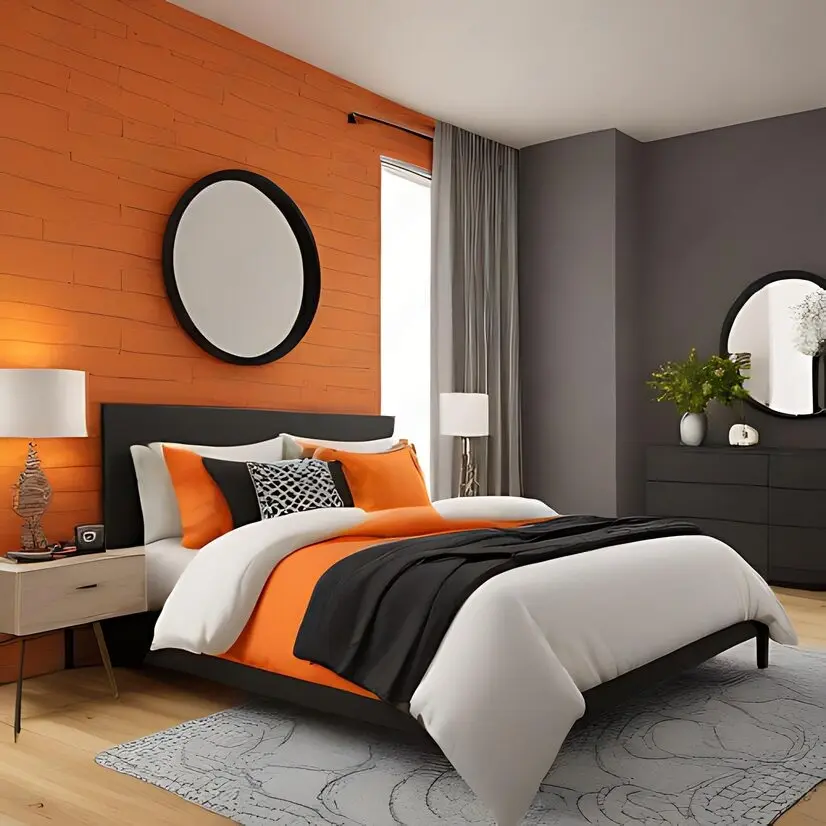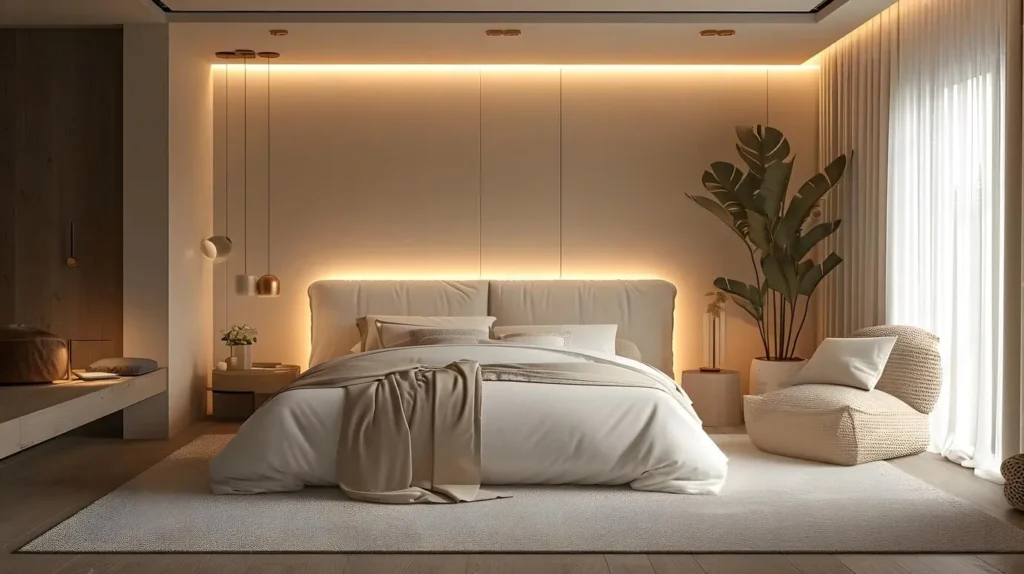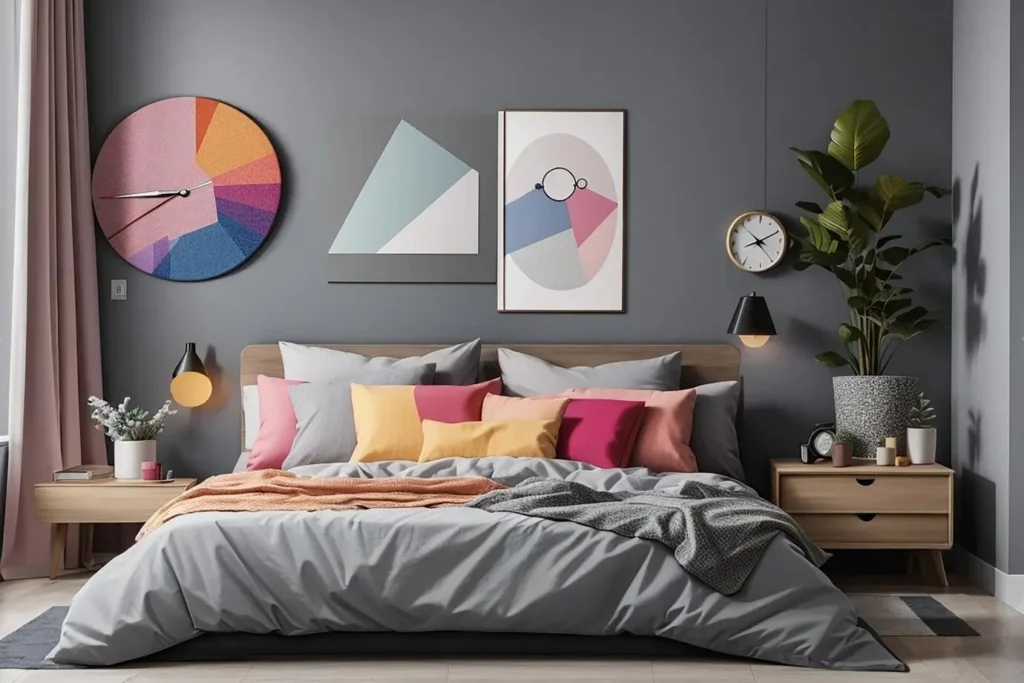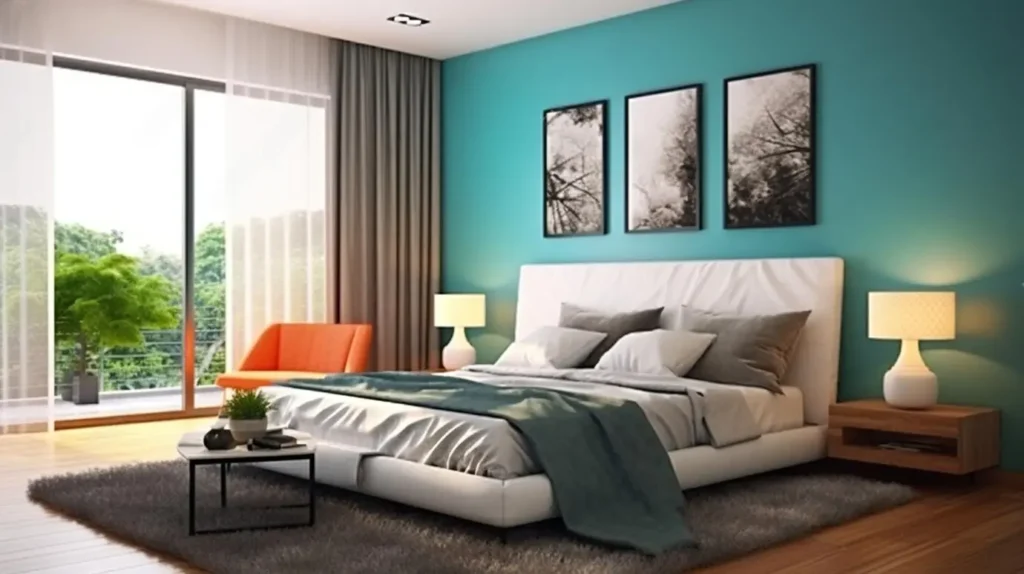The Science of Sleep: Design Your Bedroom for Ultimate Relaxation (Finally!)
Ah, sleep. That glorious state where worries fade, and our bodies recharge for a new day. Yet, for many of us, achieving a good night’s sleep feels like a constant battle. But what if the key to unlocking restful slumber lies not in counting sheep, but in the very design of your bedroom?
Science is increasingly revealing the fascinating connection between our environment and sleep quality. By understanding these principles and applying them to your bedroom design, you can create a haven that promotes relaxation and sets you up for a night of restorative sleep.

Design Your Bedroom for Ultimate Relaxation
The Science Behind Sleep: A Symphony of Light, Temperature, and Noise
Our bodies rely on a complex internal clock known as the circadian rhythm. This rhythm regulates various bodily functions, including sleep and wakefulness. Light plays a crucial role in keeping this rhythm in sync. Exposure to sunlight during the day helps suppress the production of melatonin, a hormone that promotes sleep.
Designing for Darkness:
- Banish the Blue Light: Electronic devices like phones, laptops, and tablets emit blue light, which can suppress melatonin production and disrupt your sleep cycle. Avoid using these devices in bed and consider blue light-blocking glasses in the evenings.
- Embrace Blackout Curtains: Ensure your bedroom is completely dark by investing in blackout curtains that block out any stray light from streetlamps or headlights.

Temperature Matters:
Our core body temperature naturally dips as we prepare for sleep. A cool and comfortable sleeping environment promotes this process.
- The Ideal Temperature: Experts recommend a bedroom temperature between 60-67°F (15.5-19.4°C) for optimal sleep.
- Breathable Bedding: Opt for breathable bed sheets and comforters made from natural materials like cotton or linen. These fabrics help regulate body temperature and prevent you from waking up sweaty.
Silence is Golden (But Some Sounds Can Help):
Noise pollution can disrupt sleep and make it difficult to fall asleep or stay asleep. However, some sounds can actually be beneficial.
- Create a Quiet Sanctuary: Minimize external noise by using soundproofing materials or white noise machines to mask disruptive sounds from outside.
- Embrace Soothing Sounds: Consider using a white noise machine with nature sounds like gentle rain or ocean waves. These sounds can be calming and help block out other disruptive noises.

Beyond the Basics: Designing a Sleep Sanctuary
Lighting, temperature, and noise are crucial factors, but creating a sleep-conducive environment goes beyond those elements. Here’s how to design a bedroom that fosters relaxation and sleep:
- Minimize Clutter: A cluttered bedroom can feel overwhelming and contribute to stress. Declutter your space and create a sense of calm by keeping surfaces clear and maintaining organized storage solutions.
- Soothing Colors: Soft, calming colors like blue, green, and lavender can promote relaxation. Avoid bright and stimulating colors like red or orange that can keep you awake.
- The Power of Scent: Certain scents, like lavender or chamomile, are known for their calming properties. Consider using essential oil diffusers or scented candles to create a relaxing atmosphere (but be sure to extinguish candles before falling asleep).
- Comfortable Bedding: Invest in a high-quality mattress and pillows that provide proper support for your body. Choose a mattress firmness that suits your sleeping style and personal preferences.
- Create a Sleep Routine: Establish a consistent sleep schedule and stick to it as much as possible, even on weekends. This helps regulate your body’s natural sleep-wake cycle.
- Relaxation Rituals: Develop a relaxing bedtime routine that helps you wind down before sleep. This could include taking a warm bath, reading a book, or practicing gentle stretches.

Technology for a Better Night’s Sleep:
Technology can be both a sleep disruptor and a sleep aid. Here’s how to use it wisely:
- Smart Lighting: Invest in smart lights with adjustable color temperature. Program them to transition from warm white in the evening to cool white in the morning, mimicking the natural sunrise and sunset.
- Sleep Tracking Apps: These apps can monitor your sleep patterns and provide insights into your sleep quality. Use this information to identify areas for improvement in your sleep hygiene.
Remember: Everyone has different sleep needs and preferences. Experiment with these tips and find what works best for you. By creating a bedroom that promotes relaxation and minimizes sleep disruptions, you can finally achieve the restful sleep you deserve.
Sweet Dreams!
Bonus Tip: Consider incorporating natural elements like plants into your bedroom. Studies suggest that houseplants can improve air quality and promote feelings of well-being, both of which can contribute to a better night’s sleep.

